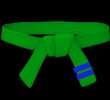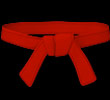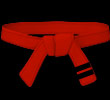Taekwondo 태권도Taekwondo Preschool
When you reach senior belt you are expected to guide the junior belts when they are beginning Taekwondo such as showing by example. To advance from one rank to the next, students typically complete promotion tests in which they demonstrate their proficiency in the various aspects of the art before a panel of judges or their teacher. View Taekwondo belt levels »
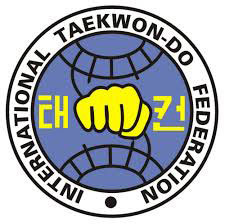
Dangun 단군왕검
The names of these patterns typically refer either to events in Korean history or to important people in Korean history. Elements of the patterns may also be historical references, such as the number of moves, the diagram, the way the pattern ends, and so on.
Dangun Wanggeom, or Tangun, was the legendary founder of Gojoseon, the first Korean kingdom, around present-day Liaoning, Manchuria, and the Korean Peninsula. He is said to be the "grandson of heaven", and to have founded the kingdom in 2333 BC. The earliest recorded version of the Dangun legend appears in the 13th century Samguk Yusa, which cites China's Book of Wei and Korea's lost historical record Gogi (古記).
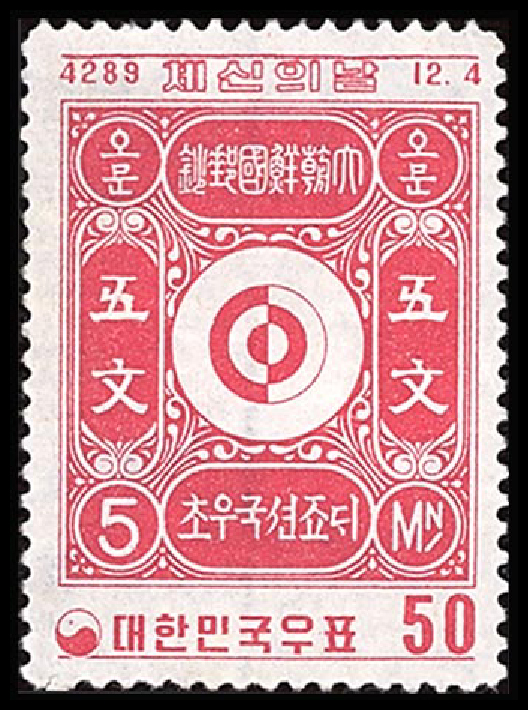
Legend
Dangun's ancestry legend begins with his grandfather Hwanin (환인; 桓因), the "Lord of Heaven". Hwanin had a son, Hwanung, who yearned to live on the earth among the valleys and the mountains. Hwanin permitted Hwanung and 3,000 followers to descend onto Paektu Mountain, where Hwanung founded the State of Shinshi (Hangul: 신시; hanja: 神市 "City of God"). Along with his ministers of clouds, rain and wind, he instituted laws and moral codes and taught humans various arts, medicine, and agriculture. Legend attributes the development of acupuncture and moxibustion to Dangun.
A tiger and a bear prayed to Hwanung that they might become human. Upon hearing their prayers, Hwanung gave them 20 cloves of garlic and a bundle of mugwort, ordering them to eat only this sacred food and remain out of the sunlight for 100 days. The tiger gave up after about twenty days and left the cave. However, the bear remained and was transformed into a woman. The bear and the tiger are said to represent two tribes that sought the favor of the heavenly prince.
The bear-woman (Ungnyeo; 웅녀; 熊女) was grateful and made offerings to Hwanung. However, she lacked a husband, and soon became sad and prayed beneath a "divine birch" tree (Hangul: 신단수; hanja: 神檀樹; RR: shindansu) to be blessed with a child. Hwanung, moved by her prayers, took her for his wife and soon she gave birth to a son named Dangun Wanggeom.
Dangun ascended to the throne, built the walled city of Asadal situated near Pyongyang (the location is disputed) and called the kingdom Joseon—referred to today as Gojoseon "Old/Ancient Joseon" so as not to be confused with the Joseon that was established much later. He then moved his capital to Asadal on Mount Paegak or Mount Gunghol.
Dating
Emperor Dangun's rule is usually calculated to begin in 2333 BC, based on the description of the Dongguk Tonggam (1485) contemporary to the 40th year of the reign of the legendary Chinese Emperor Yao. Other sources vary somewhat, but also put it during Yao's reign (traditional dates: 2357 BC-2256 BC). The Samguk Yusa states Dangun ascended to the throne in the 50th year of Yao's reign, while Annals of the Joseon Dynasty says the first year and Dongguk Tonggam says the 25th year.
Until 1961, the official South Korean era (for numbering years) was called the Dangi (Hangul: 단기; hanja: 檀紀), which began in 2333 BC. Followers of Daejongism considered October 3 in the Korean calendar as Gaecheonjeol (Hangul: 개천절; hanja: 開天節 "Festival of the Opening of Heaven"). This day is now a public holiday in South Korea in the Gregorian calendar called "National Foundation Day". North Korea dates Dangun's founding of Gojoseon to early 30th century BC.
15 March in the year 4340 of the Dangun Era is called "Royal Day Festival" (Hangul: 御天節; hanja: 어천절), the day that the semi-legendary founder Dangun returned to the heavens.
Appearances
The earliest recorded version of the Dangun legend appears in the 13th century Samguk Yusa, which cites China's Book of Wei and Korea's lost history text Gogi (古記). This is the best known and most studied version, but similar versions are recorded in the Jewang Un-gi by the late Goryeo scholar Yi Seunghyu (이승휴, 李承休, 1224-1300), as well as the Eungje Siju and Sejong Sillok of the early Joseon. Dangun is worshipped today as a deity by the followers of Cheondoism and Daejongism.
In Taekwondo
Dangun is the second pattern or hyeong in the International Taekwon-Do Federation form of the Korean martial art taekwondo. Students learn that the hyeong represents "the holy legendary founder of Korea in the year 2333 BC." Unusually for a hyeong, all the punches in Dangun are high section (eye level) symbolising Dangun scaling a mountain.
Mausoleum of Dangun
According to a publication by North Korea, the Mausoleum of Dangun is the alleged burial site of the legendary Dangun. The site occupies about 1.8 km² (.70 mi²) on the slope of Taebaek Mountain in Kangdong, not to be confused with the Taebaek Mountain in South Korea. Dangun's grave is shaped like a pyramid, about 22 m (72 ft) high and 50 m (164 ft) on each side. Many observers and historians outside of North Korea, including South Korea, consider the site controversial.
Promotion from one dan to the next can take years. The general rule is that a black belt may advance from one rank to the next only after the number of years equivalent to the current rank. For example, a newly promoted third-degree black belt may not be allowed to advance to fourth-degree until three years have passed. View more information on Black Belt Dan ( 단 ) ».
RESOURCES
This article uses material from the Wikipedia article "Dangun", which is released under the Creative Commons Attribution-Share-Alike License 3.0.








